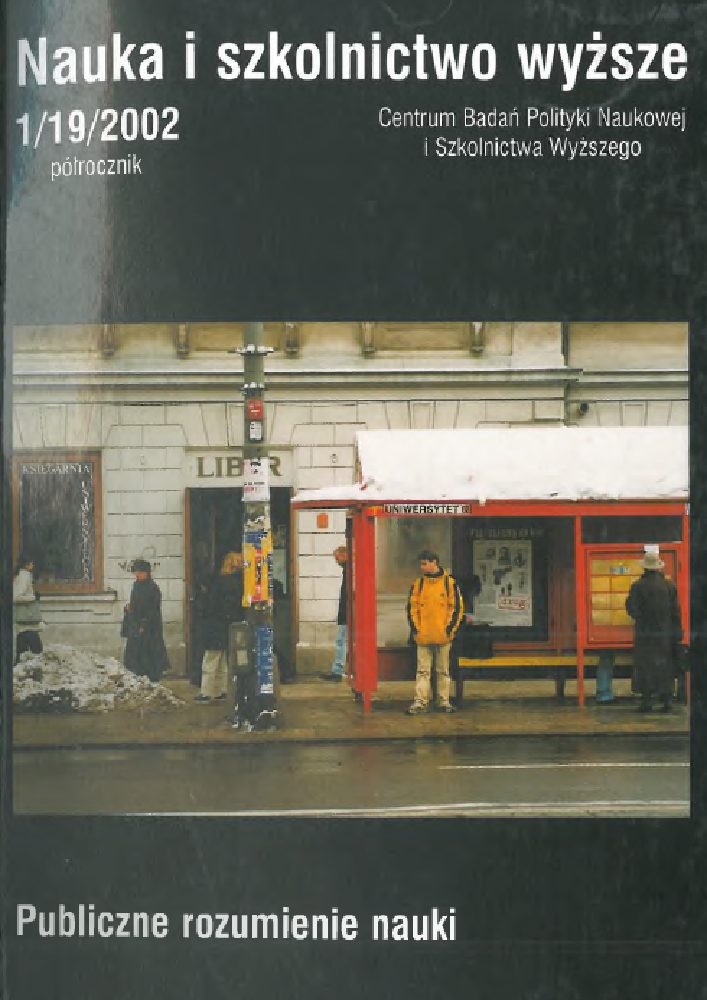Abstract
Increasing attention is being paid to scientific aspects of policy or administrative decisions taken at a European level. Certain features of the process including the potentially irreversible consequences of decisions, the uncertainties involved, and the pressure on scientists to produce a particular result, indicate the need for a new relationship between science and governance. This should incorporate greater openness and more participation in the process from stakeholders. The European Commission is working to meet these requirements through the establishment of guidelines for applying the precautionary principle, the development of a European research area to integrate research at the European level with that in the Member States, and increased attention to the management and assessment of knowledge.
References
Amendola A., Contini S., Ziomas I. 1992 Uncertainties in Chemical Risk Assessment, „Journal of Hazardous Materials”, nr 29.
Anderson R.M. i in. 1996 Transmission Dynamics and Epidemiology o f BSE in British Cattle, „Nature”, nr 382, 29 August.
Brooks H. 1964 The Scientific Adviser, w: R. Gilpin, C. Wright (eds.): Scientists and National Policy-making, Columbia University Press, New York.
CSTAS 1999 Council of Science and Technology Advisors Secretariat: Science Advice for Government Effectiveness, Canada, May.
EC 2000a European Commission: Towards a European Research Area, COM (2000) 6, January.
EC 2000b European Commission: On the Precautionary Principle, COM (2000) 1.
Funtowicz S., Ravetz J. 1990 Uncertainty and Quality in Science for Policy, Kluwer Academic Publishers, Dordrecht.
Funtowicz S., Ravetz J. 1993 Science for the Post-normal Age, „Futures”, nr 25 (7), s. 735-755.
Gibbons M. 1999 Impacts: Science's New Social Contract with Society, „Nature”, nr 402 (C81), December.
Jasanoff S. 1998 The Eye o f Everyman: Witnessing DNA in the Simpson Trial, „Social Studies of Science”, nr 28 (5-6), October - December, s. 713-740.
KuhnT.S. 1970 The Structure of Scientific Revolutions, University of Chicago Press, Chicago.
Kyriakou D. (ed.) 2000 Science and Governance, „IPTS Report”, nr 45, June.
Marino D.J. 1999 Variability in Psychical Constants from Standard Data Sources and Its Implication for Risk Assessment, w; Society for Risk Analysis Meeting: Final Programme, Atlanta, GA.
May R. 1997 The Use of Scientific Advice in Policy Making, UK Office of Science and Technology, Department of Trade and Industry, London.
Padilla A., Gibson I. 2000 Science Moves to Centre Stage, „Nature”, nr 403, s. 357-359.
Perrow C. 1984 Normal Accidents: Living with High-risk Technologies, Basic Books, New York.
Prodi R. 2000 Shaping the New Europe, European Parliament, Strasbourg, 15 February.
Schon D.A. 1983 The Reflective Practitioner, Basic Book, New York.
Stirling A. 1999 Interim Report on Precautionary and Science-based Approaches to Risk Assessment and Environmental Appraisal, prepared under the European Science and Technology Organisation network for the EC Forward Studies Unit.
Tickner J. 2000 A Map towards Precautionary Principle, Island Press, Washington DC.
Turner B. 1978 Man-made Disasters, Wykeham Press, London.
Wilkinson D. 2000 Knowledge Management at JRC: Supporting the Creation, Maintenance and Utilisation of Scientific Knowledge in Support o f EU Policies. An Action Plan, Joint Research Centre internal document.
